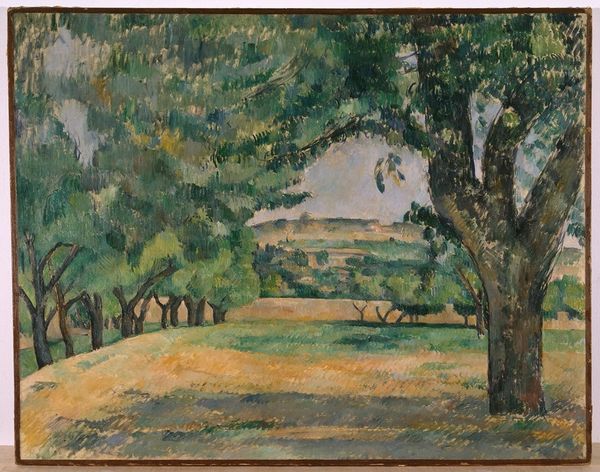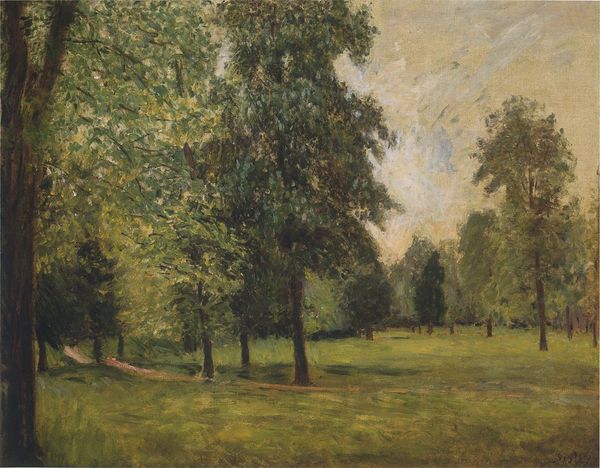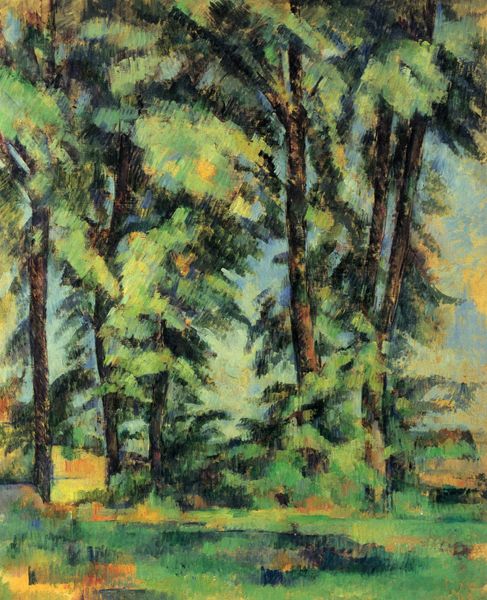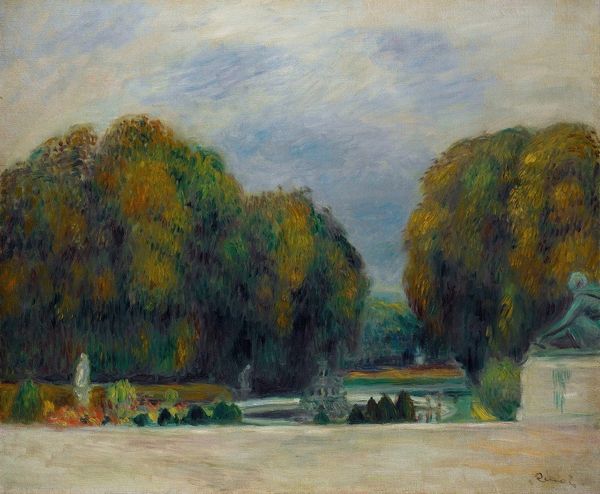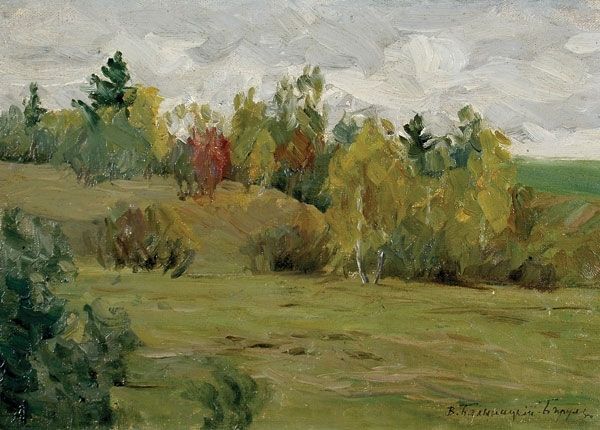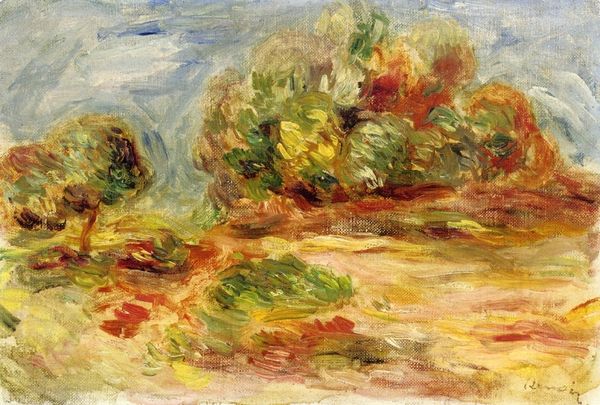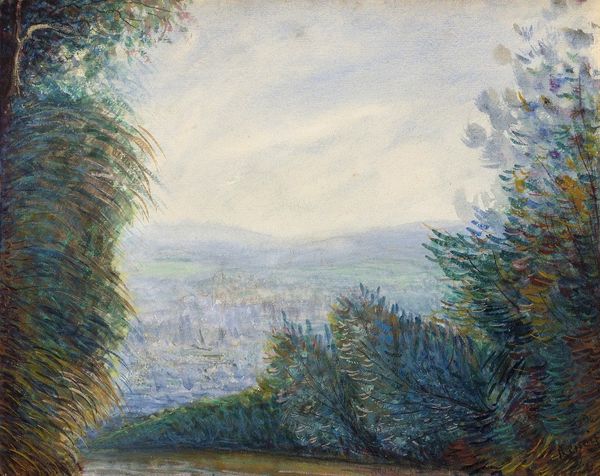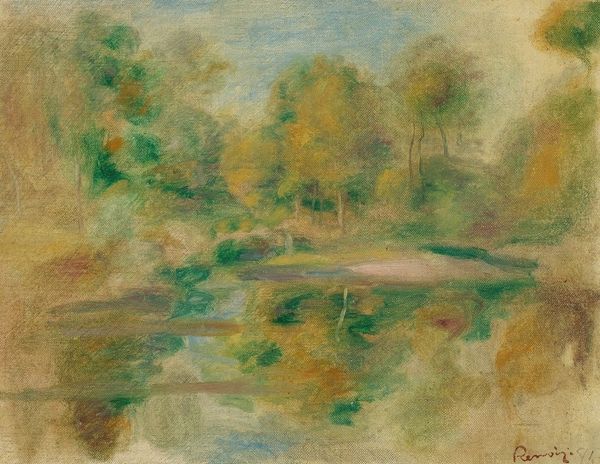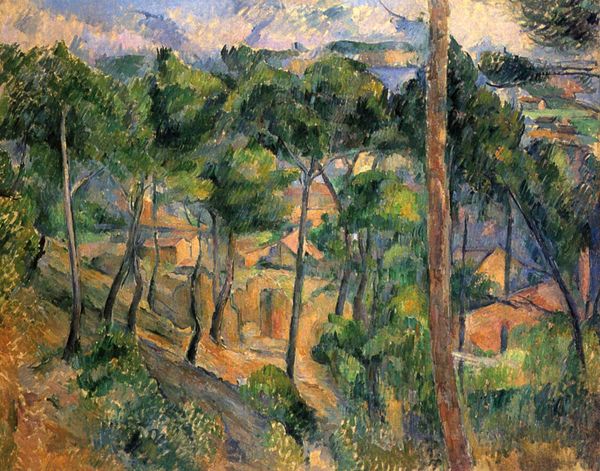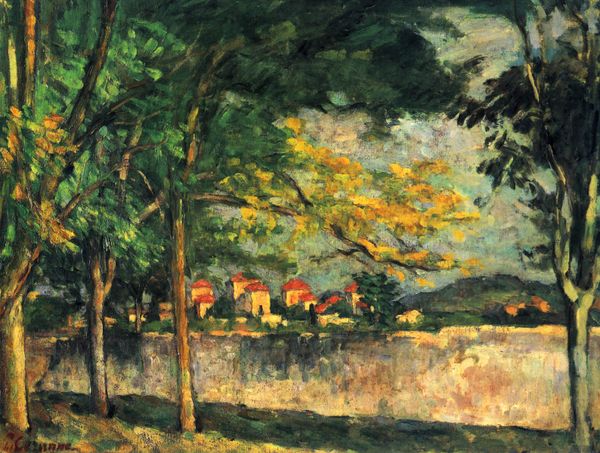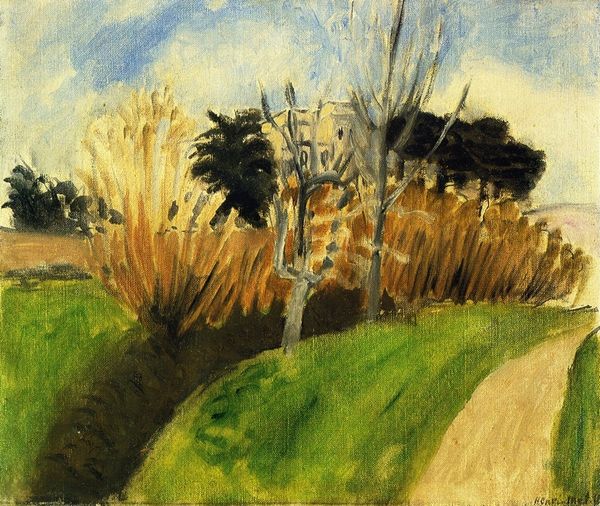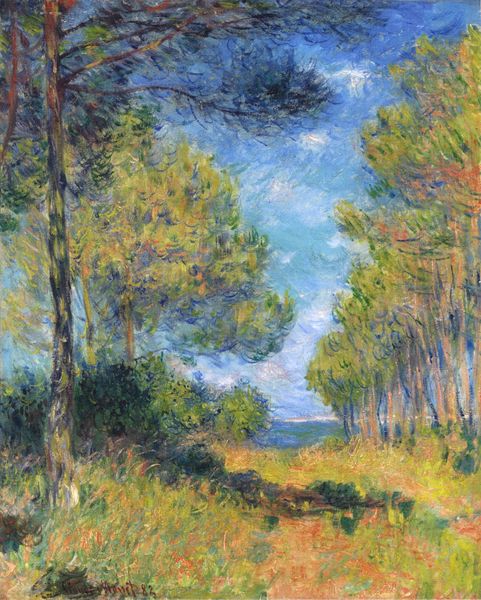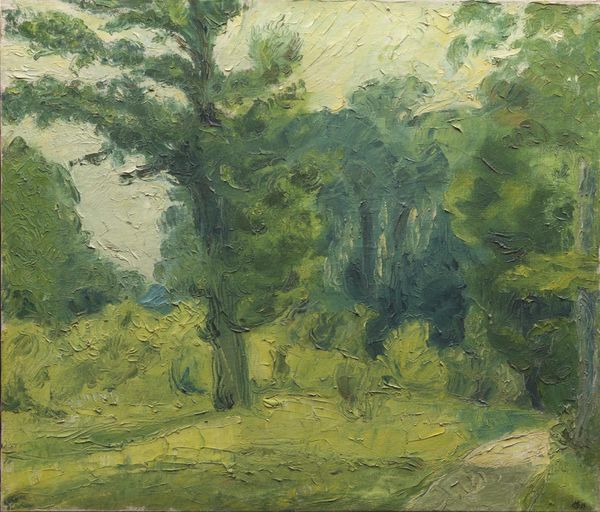
Dimensions: support: 708 x 727 mm
Copyright: © ADAGP, Paris and DACS, London 2014 | CC-BY-NC-ND 4.0 DEED, Photo: Tate
Editor: This is André Derain’s "Landscape near Barbizon," housed at the Tate. I'm struck by the almost geometric arrangement of the trees and the flatness of the picture plane. What catches your eye? Curator: Indeed. The composition is a fascinating study in spatial relationships. Notice how Derain employs a restricted palette, primarily variations of green and brown, to flatten the perspective. It draws attention to the painting's surface, and the materiality of the paint itself. Editor: So, the subject matter, the landscape, is secondary to the formal elements? Curator: Precisely. While a landscape, it serves as a vehicle for Derain's exploration of form, color, and the very act of painting. The brushstrokes, visible and deliberate, reinforce this emphasis. It is a painting about painting. Editor: I see! I was so focused on the trees I missed the statement being made by the brushstrokes and the flattening. Curator: It's a rewarding experience to analyze how artists manipulate these elements. I'm glad we could explore this further.
Comments
tate 8 months ago
⋮
http://www.tate.org.uk/art/artworks/derain-landscape-near-barbizon-n04784
Join the conversation
Join millions of artists and users on Artera today and experience the ultimate creative platform.
tate 8 months ago
⋮
In 1919 when Derain was demobbed after serving in the First World War, he returned to his painting career. He rejected the brilliant colours he had used before the war and used instead quieter colour harmonies. He was an admirer of early French landscape painting, particularly the work of Courbet, Corot, and his contemporary Renoir. In 1921 Derain introduced a new softness of form into his work and this landscape is a good example of that. It was painted in the Forest of Fontainebleau, close to the village of Barbizon, a venue favoured by mid-nineteenth century French painters, such as J.F. Millet and T. Rousseau, who are now seen as forerunners of Impressionism. Gallery label, September 2004
